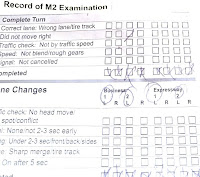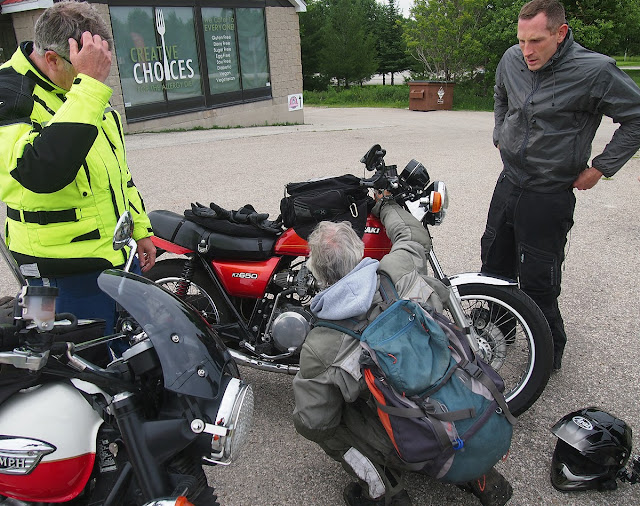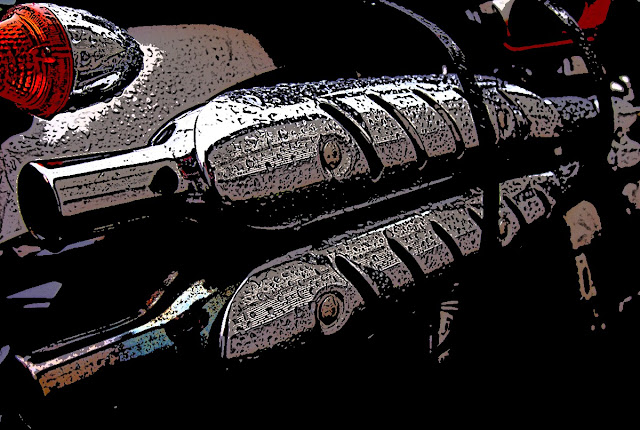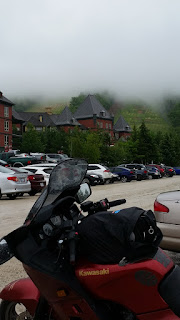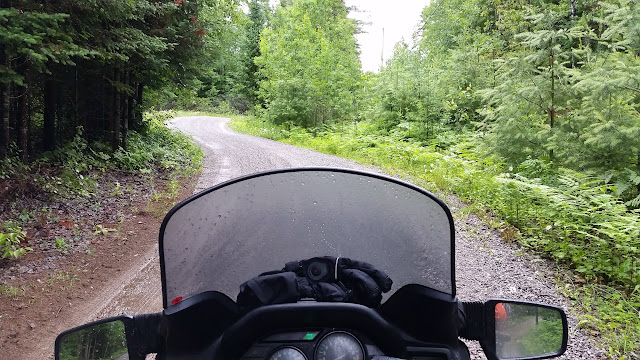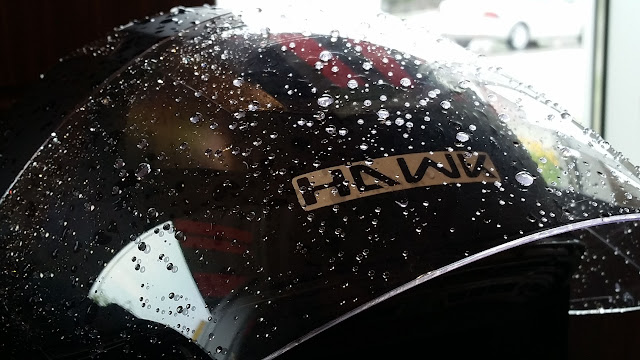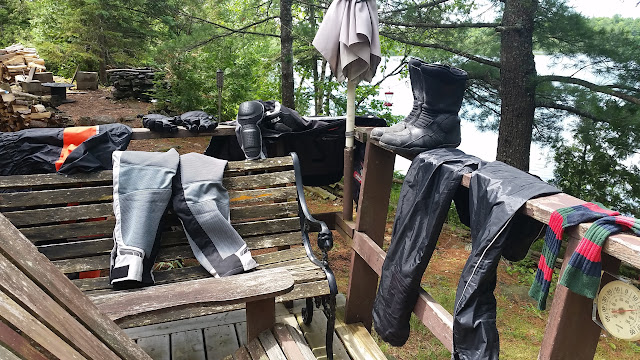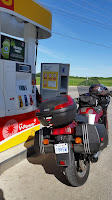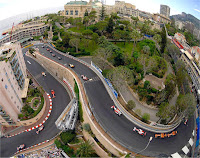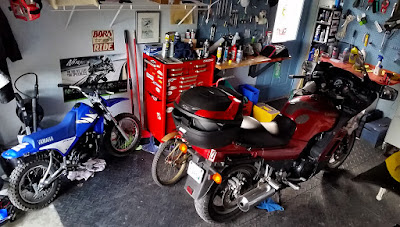| Then… |
Here I am early on a Saturday morning back at Conestoga College for my M2-exit course. It’s the last official step in my progression through Ontario’s graduated motorcycle licensing system.
I got my M1 in March of 2013 after writing a short test in a dingy Drivecentre office in Guelph. Getting my M2 in April of 2013 was the next big step, and the last time I was sitting on a bike in Conestoga’s parking lot. Back then they were little Yamaha 250s, this time I’m rolling in on my own version of the Millennium Falcon, a 999cc Concours I’ve rebuilt myself. My motorcycling has evolved a lot in the past two and a half years.
It was a busy weekend at the college with two beginner courses with over 50 students getting started on the little bikes. Our M2-exit course had only eight people in it, four guys and four girls, riding everything from the most ridiculous cruiser imaginable to perfectly serviceable 500cc sport bikes.
| … and now. The M2-exit is as diverse in bikes as it is in riders |
Watching the Victory ride all over the don’t-cross-lines while trying to lean a 280mm rear tire was both tragic and kinda funny. It also had trouble stopping in the box, but hey, it sure was stylish.
The people on the course were as wide ranging as you can imagine, from a Ninja-riding pretty, blonde environmental scientist in her 20s to a grizzled, cruiser riding truck driver in his 50s. You really got to see the breadth of motorcycle culture in our M2-exit class.
The Friday night was your typical three hour theory talk with lots of diagrams, videos from the 70s and legal talk. When we left we had to be back in the room ten hours later (and I had a 90 minute commute in there too).
| What the bike-control sheet looks like |
On Saturday I was there bright and early to secure one of the first two spots on the testing calendar so I could leave earlier. Saturday morning was spent in stifling heat in the parking lot following lines and working on slow speed manoeuvring. Every time we stopped everyone stripped off jackets, gloves and helmets and lay under a tree drenched in sweat. It was good to practice slow speed and precision riding and it turned into an impromptu test of the Concours’ cooling system.
With temperatures on the wrong side of 40°C on the pavement, the fans kept kicking on and off when needed but the big bike stayed, at most, in the middle of the temperature gauge. By mid-morning several of the cruisers were having trouble starting in the heat and the rear brake light fell off the brand new Victory mega-cruiser. The 21 year old, $800 Connie hummed along like a champ though, always starting at the touch of a button. Damn, I love that machine.
After a short lunch we were back out, this time doing group rides. One was simply a primer to riding in formation where we followed an instructor around while he very very obviously checked for dangers in places where we might be expected to check for dangers on our test. It was very helpful in calming everyone down.
The second ride-out was a practice run with the instructional ear pieces in. On the test you have a walkie-talkie with an earpiece that the instructor gives you directions through. He then assesses how you perform these actions from a following car. I was lucky enough to be the lead rider so I got to practice the instructions with a clear road in front of me.
Riding out in a group made me wonder why people would ever want to do that in a city. Every stop is turned into a stop times the number of riders in the group, especially if you’re further back. I found riding around Kitchener in a group to be very tedious.
After all that we finally lined up for the road test. While each rider went out, the rest were writing a knowledge test in the classroom with questions about rules of the road. I got to go second. It was about 45 minutes of riding in residential, industrial and regional roads followed by a brief stint on the highway.
It was all about shoulder checks, mirror checks and constantly (and obviously) scanning for dangers. If you adapt to their system you’ll find it fairly easy to work with, but I found it too regimented. Defensive driving should be fluid and agile, constantly adapting to varying situations. Following a checklist means you’re not honouring the circumstances as they change (for example, always pulling into the slow lane when you have a better space bubble in the fast lane).
I was on my way home with a signed M2 exit pass sheet by 3:30pm. I was hot, tired and sore (your wrists and fingers take a real beating after a day of slow speed manoeuvring and group town rides). I’ll take using my mirrors more out of the testing, but beyond that I found the frantic meerkatting to be both exhausting and unsettling on the bike. We were encouraged to spin our heads around constantly but this is both tiring and disorientating. There is something to be said for a composed approach to riding a motorbike.
Having to ride conservatively within posted limits was also very difficult. I’m willing to shoulder the responsibility for my own safety, but not if I must have distracted people in SUVs creeping past me (and into me) because I’m required to ride at five under the limit in the inside lane all the time.
I’m glad I took the exit course. I got some good practice and a supported approach to the MoT test which isn’t always commonsensical, but I’m also really glad it’s over. One more trip to the take-a-number, florescent lit, beige misery that is the Drivecentre office and I’m a fully licensed rider.

